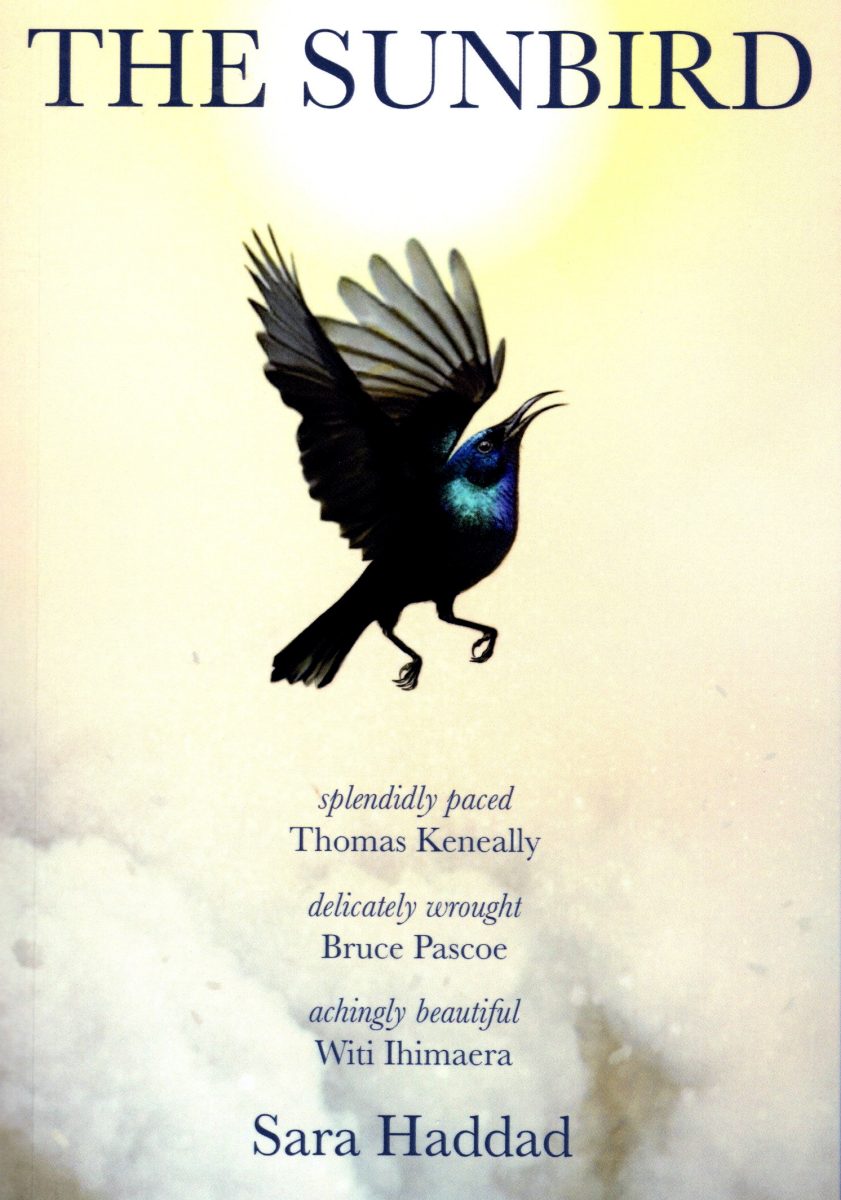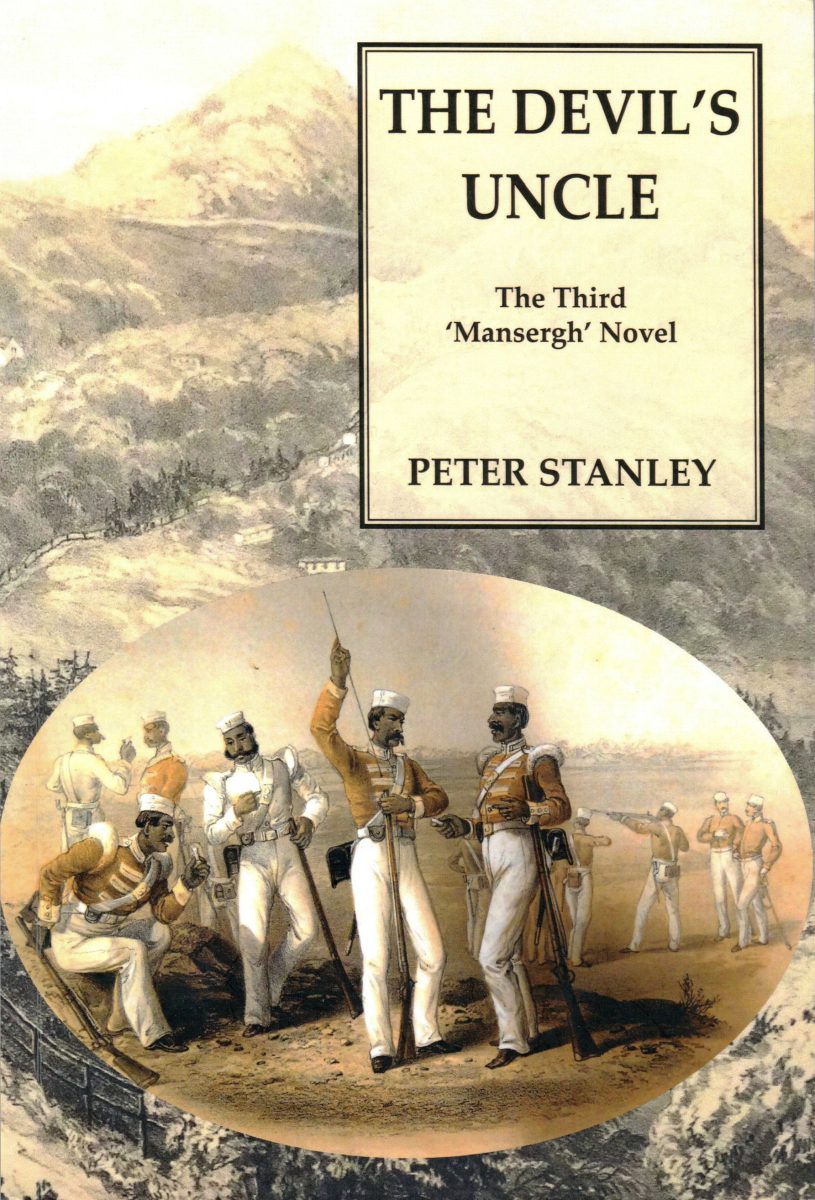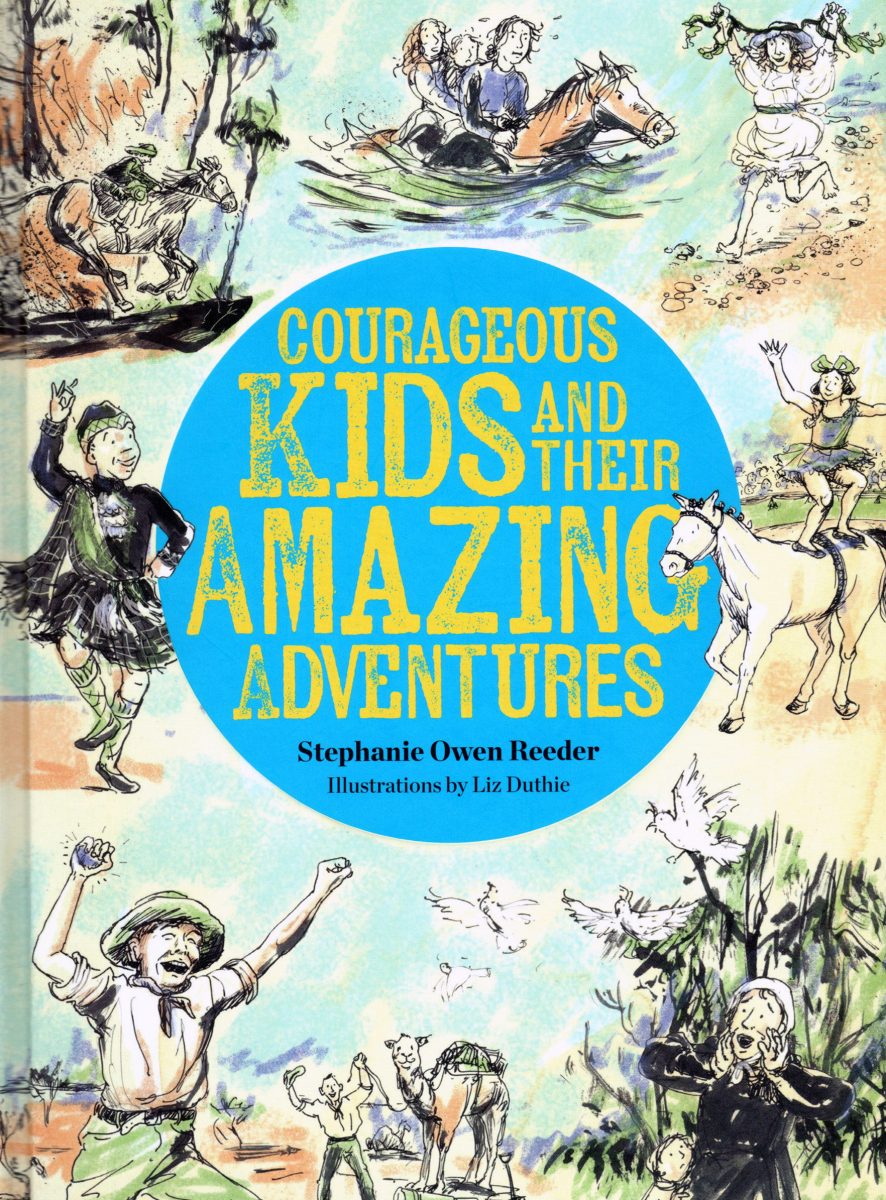
The Sunbird by Sara Haddad is both an allegorical story and a brief factual history of Palestine. Image: Supplied.
I am claiming Sara Haddad as a Canberran as she has strong family connections here from childhood.
Her exquisite work, The Sunbird (independently published, Australia, 2024, cover design and illustration by Tam Morris) is in two parts – an allegorical story about Nabila Yasmeen, who as a girl experienced the horrors of the Nakba in Palestine, and a brief factual history of Palestine.
We meet Nabila as a young child in Palestine in 1947 and as an older woman in Australia in 2023.
In this gently told tale, Nabila is desperate to start school and hangs outside the school building for the beginning of lessons, leaving only when shooed off by the benign teacher. In June 1948, having just learnt how to write her name, she feels the first of the bombs.
In the present-day story, Nabila cares for her garden and for the birds and animals in the bush around her Australian home. She catches the bus into the city to join the weekly demonstrations for Palestine, finding each time she goes that public sentiment has shifted just a little.
The addendum, with its dates and facts, serves to put recorded context to the human story of Nabila.
Beautifully crafted, this work is rich in symbolism. The sunbird is a symbol of both freedom and pain, shown on the cover flying above the smoke of bombs. There’s hope in this rising above.
The Sunbird is a quiet and persistent request to learn the history and to respond to our fellows, to see the humanity in the ‘Palestine situation’ beyond the politics of power.

The Devil’s Uncle is the third novel in historian Peter Stanley’s Mansergh series set in British colonial India. Image: Supplied.
Historian Peter Stanley takes us to British colonial India in his Mansergh series, of which The Devil’s Uncle (independently published, Australia, 2020, cover and internal design Rosemary McKenzie) is the third. It can, however, be read as a stand-alone.
In this novel, newly a father, Mansergh is sent to Nanda accompanying a visiting classical scholar, Edwin Sanpeer MA, in his quest to uncover the tomb of Bucephalus, Alexander the Great’s famed horse. His Commander in Chief, Napier, is seen at a time of mental and physical decline.
The archaeological expedition brings Mansergh into contact with a group of soldiers under the command of the ineffectual Major Carse and the bullying adjutant Rugely.
Mansergh is appalled by Rugely’s behaviour and the abusive treatment he metes out to everyone in his orbit, including the Major’s gentle daughter Fanny and the prostitute he has set up in one of the huts for the rostered entertainment of the troops.
Nevertheless, the quest for the horse’s tomb continues until the dig at the supposed tomb generates hostility from the local Muslims for whom it is a religious site. It soon becomes obvious just how inept and uninformed the British have been.
The story is delightfully complex both in its plot and its perspicuous examination of human character and behaviour. Peter Stanley has used a language and style entirely appropriate to both the British Raj and the 19th century era of the story.
Peter Stanley’s expertise as a research professor is evidenced in his profound understanding of the world he depicts. He also deftly creates a story that hooks contemporary readers. He is sharp in his observations but also compassionate for even the least worthy of his book people.

The children in Courageous Kids and Their Amazing Adventures demonstrate life skills that carry them through the worst of times. Image: Supplied.
Stephanie Owen Reeder and Liz Duthie’s Courageous Kids and Their Amazing Adventures (National Library of Australia Publishing, Australia, 2023, designer Hugh Ford, cover and internal illustrations Liz Duthie) offers children a wonderful way to learn history.
All the heroes and heroines are children, who exemplify bravery, care for family, perseverance in the face of difficulties, cooperativeness and innovative thinking. They demonstrate practical life skills that carry them through the worst of times.
Today’s children can see themselves as possible history makers through these stories. It’s the ‘being what you can see’ phenomenon.
The author also includes a summary of the adult life of these history makers, often not so happy, unfortunately.
Liz Duthie has created black and white drawings that beautifully capture the spirit of the stories, the characters of the children and the feel of the historical time periods.
Children will find these stories enthralling, I am sure. I certainly did.
Barbie Robinson is co-founder and a content creator for Living Arts Canberra, a not-for-profit media outfit supporting arts and community in the Canberra region and books worldwide through its website, podcast interviews and a 24/7 internet radio station at Living Arts Canberra.












